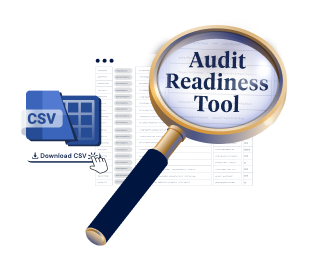Understanding the Intent and Expectations
Standard 2 requires the governing body to ensure that aged care services are safe, well-managed, and always improving. It calls for clear systems around staff training, workforce planning, performance reviews, and open feedback. The standard articulates that strong leadership and good systems are essential to providing high-quality care.
This standard is foundational, governing how all other standards are operationalised. It applies to every level of the organisation and directly shapes leadership capability, service governance, and the quality of the workforce.
Using Training to Meet Standard 2 Outcomes
Standard 2 includes 10 outcomes, several of which establish explicit expectations for workforce education, training systems, and organisational learning culture.
Below is a summary of the training focus stemming from each outcome in Standard 2.
| Outcome | Training Focus |
|---|---|
| 2.1 Partnering with individuals | Training in co-design, communication, feedback, and rights-based care. |
| 2.2 Culture of quality, safety and inclusion | Induction training on organisational values, safety culture, and psychological safety. |
| 2.3 Accountability and systems | Training on the quality system, audit, compliance processes, and open disclosure. |
| 2.4–2.6 Risk, incident, complaints and feedback management | Skills in serious incident response (SIRS), reporting, and complaints resolution. |
| 2.7 Information management | Digital literacy, record keeping, privacy, and consent training. |
| 2.8 Workforce planning | Understanding workforce models, staffing adequacy, diversity and continuity. |
| 2.9 Human resource management | Competency-based training on core matters, supervision, induction, and skills validation. |
| 2.10 Emergency and disaster management | Role-specific emergency preparedness and response protocols. |
Training System Requirements
Before listing the specific training topics, it's important to highlight that Action 2.9.5 in Standard 2 sets clear expectations for what a provider’s training system must include.
- Effective, regularly reviewed, and improved over time.
- Training must be role-specific, aligned to contemporary evidence-based practice, and the scope of care and services delivered by specific job roles.
- Informed by feedback, incidents, complaints, audits, and performance reviews.
- Training standards also apply to contractors, agency staff, and, where applicable, volunteers, who must be inducted and held to the same competency standards as the regular workforce.
Core Training Topics
Under 2.9.6, competency-based mandatory training to all aged care workers must be provided on core topics, which include:
- Person-centred, rights-based care
- Culturally safe, trauma-aware, healing-informed care
- Caring for people living with dementia
- Responding to medical emergencies
- Understanding and applying the Code of Conduct
- Serious Incident Response Scheme (SIRS)
- Strengthened aged care quality standards
Ausmed Modules to Meet Core Matters
The following modules from the Ausmed Library help you meet the education and training requirements of Standard 2.
Explore the full library here.
| Core Matter Listed in Action 2.9.6 | Ausmed Module | Duration (minutes) |
|---|---|---|
| Person-centred, rights-based care | Person-Centred, Rights-Based Care for the Older Person | 12 |
| Culturally safe, trauma-aware, healing-informed care | Culturally Safe, Trauma-Aware and Healing-Informed Care | 25 |
| Caring for people living with dementia | Dementia and Understanding Behavioural Changes | 30 |
| Responding to medical emergencies | Basic Life Support (BLS) | 32 |
| Recognising Deterioration: Care Workers | 23 | |
| Understanding and applying the Code of Conduct | The Code of Conduct for Aged Care | |
| Serious Incident Response Scheme (SIRS) | Serious Incident Response Scheme (SIRS) | 15 |
| Strengthened aged care quality standards | Strengthened Aged Care Quality Standards | 40 |
| Emergency and disaster management* | Emergency, Disaster and Evacuation Management | 30 |
Need Help Building or Reviewing Your Training System?
Explore these practical Ausmed resources designed to support aged care leaders:
- Guide to Mandatory Training – Understand the regulatory, clinical, and educational best practices needed to effectively implement a mandatory training program.
- A Guide for Managers: Mandatory Training in Aged Care – Dedicated support for designing, implementing and evaluating a practical mandatory training aligned to the strengthened aged care quality standards.
- Guide to Induction Training – Learn how to create an onboarding experience that ensures staff are safe, capable, and confident from day one.
Use these guides to ensure your training system complies with the Strengthened Aged Care Quality Standards and supports a more capable workforce.
Who Needs Training?
Standard 2 communicates to all registered providers that training obligations extend to the entire organisation, including:
| Workforce Group | Relevant Training Areas |
|---|---|
| Aged care workers | Mandatory training on core topics, additional learning based on feedback, performance reviews and as new needs arise, for example, as a result of complaints, quality indicator data and organisational priorities. |
| Managers and team leaders | Supervision skills, coaching for audit readiness, and skills to conduct performance management, including learning conversations. |
| Governing body, including executive teams | Clinical/corporate governance, legal obligations and psychological safety. |
| Contractors, agency staff and volunteers | Induction and role-based training as required. |
Support Your L&D Team
Ausmed’s L&D Toolbox is your go-to resource for planning, implementing, and improving education and training initiatives. It provides hundreds of resources all designed to help you build a compliant, capable, and confident workforce.
Whether you're onboarding new staff, refining your mandatory training calendar, or preparing for your next audit, the L&D Toolbox is built for you.
Explore the L&D Toolbox and empower your team today.
What Will Be Audited?
Summary of Evidence Items: Standard 2
Below are the types and examples of evidence auditors may request relating to Standard 2 during an audit.
| Evidence Type | Examples |
|---|---|
| Documents and records |
|
| Governing body feedback |
|
| Management feedback |
|
| Worker feedback |
|
| Third-party feedback |
|
| Experience of individuals |
|
| Observations |
|
| Care outcomes |
|

Ensure your organisation is prepared for your first audit under the strengthened Standards.
Watch our Webinars
Here is a list of the webinars Ausmed has delivered to support best practices in training and education under the strengthened aged care quality standards:
- Streamlining Induction Programs
- Mandatory Training Best-Practice
- Improving Compliance with Training
- Beyond Compliance – Defining Workforce Capability
- Preparing for Your First Audit Under the New Standards
- Is Your Training System Audit-Ready?
- Demonstrating Workforce Capability in Audits
- Competency Assessments for a Capable Workforce
- Getting Your Board Ready for an Audit
- Reporting Against the New Aged Care Standards
Why Regulation Drives Education
Standard 2 recognises that safe, inclusive, and high-quality care begins with strong governance, accountability, and a capable workforce. It places responsibility on the governing body to ensure systems are in place for leadership, training, performance, and risk management.
The Organisation is the operational foundation for all other standards. It reinforces that strong leadership and organisational systems are critical to providing safe, person-centred care across all standards.
This standard reminds us that regulation isn’t just about compliance. It’s one of the most powerful drivers for education. When done well, training becomes a vehicle to translate new standards into improved care, not just box-ticking.



